If you are a true trekker, you can’t miss the opportunity to be a part of Nepal’s most rewarding guided trek – Everest Base Camp Trek. Trekking to the foot of the highest mountain in the world is not as easy as you think. Although it is a straightforward trekking destination, it still needs to be trekked with a guide. It takes about 14 days to complete the whole tour so a guide to trek in the Everest Base Camp is mandatory.
Roaming around with the guide is always the best thing, be it for safety, hassle-free travelling or for cultural and local knowledge.
It is not mandatory for you to travel in group or through local trekking agency to acquire permit. Also, the government hasn’t imposed any kind of restrictions to trek to Everest Base Camp in a group; however, it doesn’t mean that this region is fully safe and secured for the solo trekkers. It might be achievable but it will not be fun and memorable as you will be busy tackling problems by yourself instead of sightseeing and enjoying the natural beauty and walking on the trails.
Trekking Everest Base Camp independently imposed different obstacles like poor communication, lack of proper interaction with the locals, accommodation threat, transportation problems, unreliable packing list etc.
Here we have enlisted 10 reasons to trek Everest Base Camp with the guide to make lifetime experience which can be cherished forever.
1. Sagarmatha National Park
Everest Base Camp is surrounded by Sagarmatha National Park, which is home to the numerous flora and fauna along with the varieties of wildlife. You need to pass through this park to reach the base camp. Having large area, you must need the direction from the guide to escape from this park. If you trek without a guide, there is a high possibility of misleading the way and following the wrong trail.
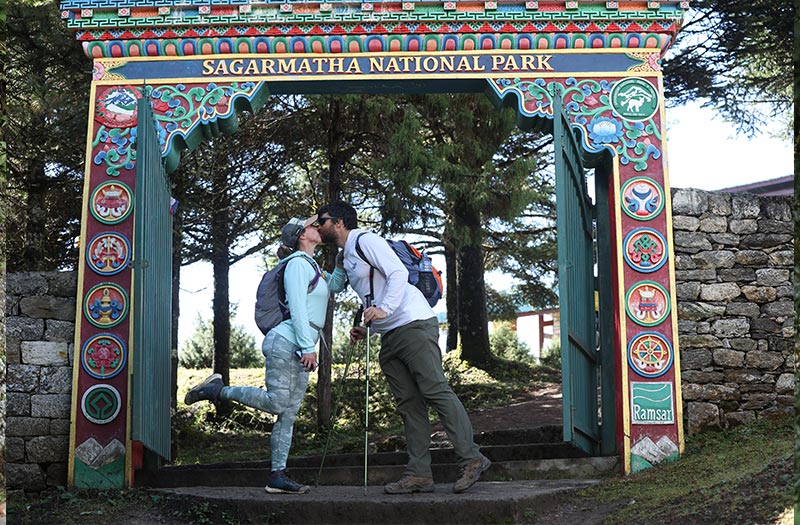
Besides this, this park consists of endangered species of animals like Himalayan Tahr, Snow Leopard, Himalayan Goral etc. and abundance of fauna such as Rhododendrons, Juniper, Blue Pine etc. The only professional and registered local guide has knowledge about the spot from where one can get a chance to view this species. Also, a guide will help you to safely cross the park without any attack from the wild animals.
2. Tackle the Everest Base Camp Trek’s Difficulty
Everest Base Camp trek is demanding as it is situated at the altitude of 5,364m from the sea level which might result in Altitude Sickness. Similarly, you will be trekking for around 12 days by walking 5 to 6 miles per day, uphill and downhill. It is almost impossible for the solo trekkers to go through these problems on their own. Everest Base Camp trek with a registered guide is the only option for the trekkers to tackle the difficulties.
This trek consists of a few steep climbs and most of the trails are non-technical. However, because of long walks at high altitude, trekkers easily face breathing problems. If the guide is by the side of trekkers, then they will get support, guidance to deal with symptoms of altitude sickness and medication to cure it which will provide them relief and give them ability to continue the trek after some rest. Guide motivate well for each trekkers.
3. Stunning Views of the Giant Himalayas
Everest Guided trek is one of the best ways to view the glimpse of peaks such as Mt. Everest, Ama Dablam, Cho Oyu, Lhotse, Island peak etc. To enjoy the close-up views of these snow-capped mountains, you need to reach the exact spot from where you can get the clear view. With the help of a registered guide in Nepal, you can easily reach the actual spot from where visual of the peaks can be obtained without any blockage.
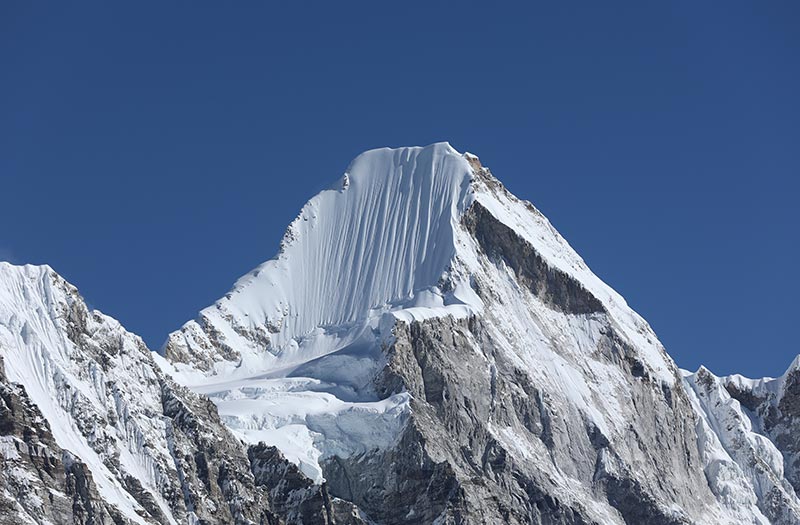
Every trekker wants to capture the photographs and videos of the peaks and Khumbu icefall for lifetime memories. However, without a guide, you can’t reach the trail from where you can easily capture the moments. So, to enjoy the panorama of the Khumbu Valley and to capture it, you must take help from the experienced guide.
4. Rich Local Culture and Traditions
Everest Base Camp trek is famous to get insight of the Sherpa culture of Nepal. From the entrance of the trek – Lukla to the end of the trek, this region is fully inhabited by Sherpa. Because of the language barriers and poor communication skill, trekkers might fail to interact with them. However, with the help of a guide you can easily learn about their local culture and religion, and can interact with them happily.
Locals of Namche Bazar follow the Tibetan Buddhism because they are influenced by Tibetan culture. Also, you can discover the monasteries like Tengboche, Mani walls, prayer flags and wheels on your way. If you follow the pathway with the guide, you will be able to talk with villagers as a result you can experience their warm hospitality. Guide of Everest Base Camp possesses high knowledge about the surrounding, too so they can explain to you about the history and traditional traits of the Himalayas.
5. Everest Base Camp’s Permits
You need to obtain two permits to trek in the Everest region – Sagarmatha National Park permit and Pasang Lhamu Rural Municipality permit. You don’t need to have local registered guide or agency by your side to obtain these permits; however, you need to deeply understand about each of this permit, required documents to obtain them, place where these permits are issue, where their counters are in Khumbu valley etc. which make your trek to Everest Base Camp complicated.
As a result, a guide to trek in this region is crucial if you want to enjoy the hassle-free traveling. Only the local registered guide and agency can issue the permits without much obstacles as they are from the traveling background and have deep knowledge about issuance of permits.
Since you are on vacation and planning to trek Everest Base Camp, you must want to travel comfortably without stress. Only a guide can help you in providing a wonderful experience by managing all your travel documents.
6. Acclimatization
Acclimatization on a long duration trek is key to survive against the high altitude and survive from the altitude sickness. However, without the help from the professional guide and local trekking agency, you can’t be able to prepare the right itinerary with enough acclimatization days. It is necessary to keep at least 2-3 acclimatization days to prepare yourself for further trek.
Struggling to prepare the perfect itinerary is common so instead of worrying, you just need to hire the guide and seek help from them in the preparation of the itinerary. Guide will help you out in which place you need to stay for the acclimatization and how many days are enough for it as per the altitude and your health conditions.
7. Everest Base Camp’s Route
To successfully succeed in a long 12 days trek, you must be able to clearly distinguish between the long and short routes. However, it is extremely hard to identify the exact route even to the experienced trekkers. So, Everest Base Camp trek with a guide will help you out to follow the easy and short trails to avoid the possible risk.
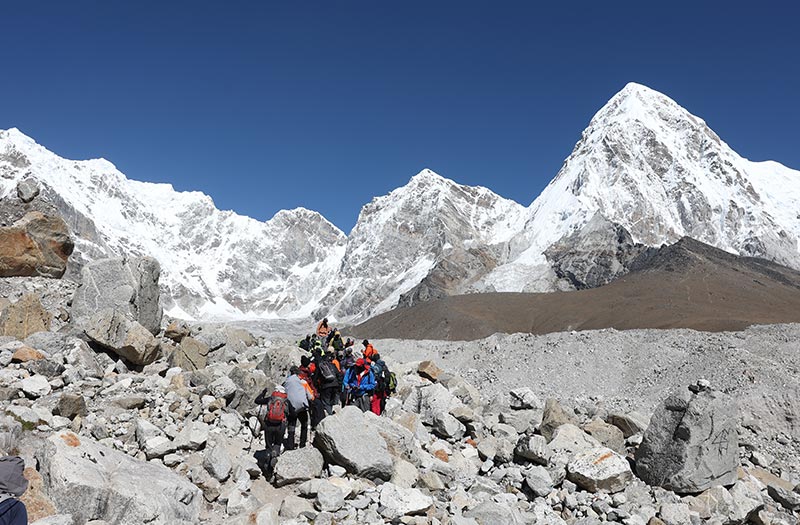
Everest Base Camp follows the routes of Lukla, Phakding, Namche Bazar, Tengboche, Dingboche, Lobuche, and EBC/Kala Pathar. Also, you have another route from Gokyo valley, too which separates from the Namche Bazar. It sounds so difficult only when talking about it. So, just imagine how hard it will be for you to go through the right trail. Local villagers might mislead you sometimes. So, choosing the registered guide is the only choice for you to complete the trek without getting lost in the way.
8. Travelling in Group
Travelling in group is always a solid idea if you want to have the infinite memorable days and a lot of fun. If you stick towards going for solo trek, then you will be all alone throughout the trails. There will be no one by your side to share the stories, chat, and laugh. However, if you trek to Everest Base Camp in group with guide, then you can easily deal with the difficulties and will never be zone out even for a second in the entire trip.
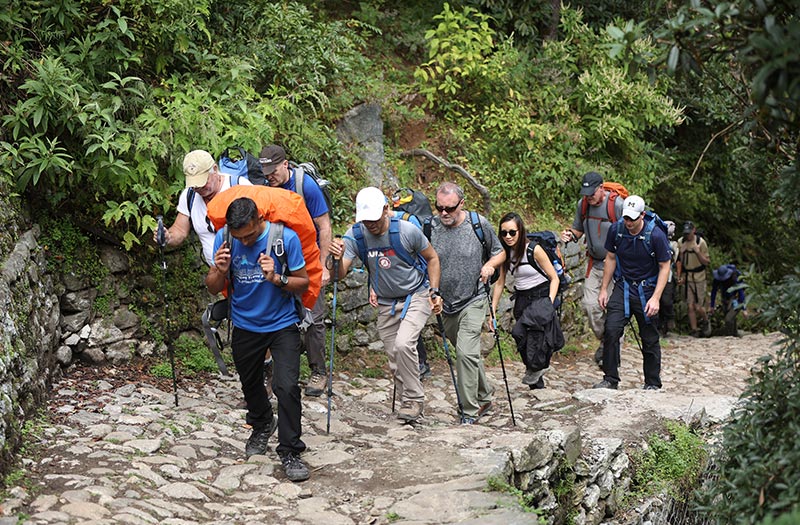
Forget about solo trekking and just make your group, plan the trek, hire an experienced registered guide and head towards your destination. You can also avoid the excessive cost if you go for group travelling. Everest guided trek in group is always a best way to explore the hidden treasures of the Himalayan region of Nepal.
9. Plan for Accommodation
You will be staying in a Tea house during your Everest Base Camp trek. If you plan for solo trekking, it will be hard for you to book the tea house as it will already be booked by the other trekking agency for their groups. During the peak season, it can even lead you to spend your night at the dining table or sofa because of your inability to book the accommodation before the trek.
Everest Base Camp trek without a guide can be harsh if you don’t find a tea house to sleep peacefully. Experienced guides have a good relationship with the owners of the tea houses, so they can help you out in booking the room before starting the journey. Even without pre-booking, they can easily get access to the rooms in the teahouse. So, be it during peak season or off-season, with the help of a guide, you can easily get home to stay even at high altitude.
10. Packing Right Gears
Packing list of Everest Base Camp must need to be accurate to avoid the possible risk in the trails and to stay within the weight limit. With the help of guide, you can plan your equipment list precisely. Also, an experienced guide knows about each and every corner of the Khumbu region, so they can easily suggest to you whether to pack the technical climbing tools or not.
Without the guidance of them, you will end up packing the things which are less important for the trek and missing the things more important for the trek. Also, there is a high chance of crossing the weight limit while you are packing independently because you might feel like everything is crucial for trek. It is only the local trekking agency and guide who can tell you the exact list required for the trek.
Everest Base Camp Independently Vs with a Guide
Everest Base Camp is a demanding trek as you will be passing through several steep climbs. When you plan on trekking alone, it will make the entire trek more challenging.
Altitude sickness, misleading by the locals, poor communication, lack of proper interaction with the villagers etc. are some of the major problems faced by the solo trekkers.
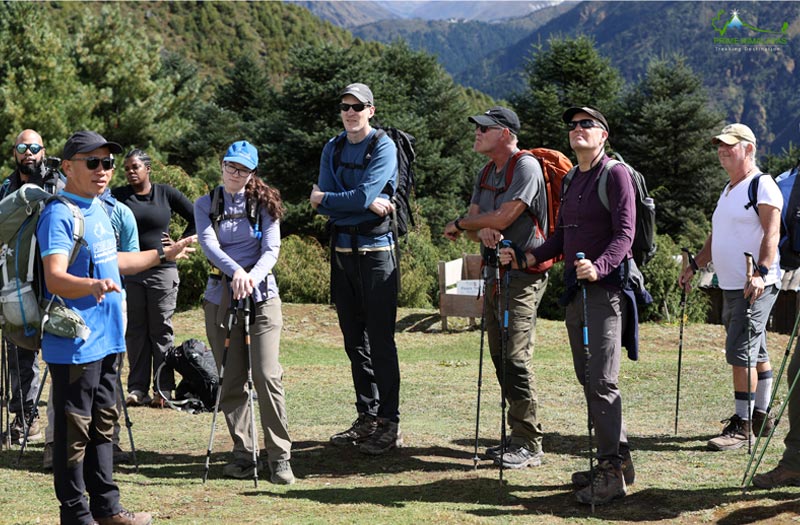
Overall, trekking alone in EBC comes with many problems which can be hard for the trekkers to deal with on their own. So, going for solo trekking by hiring at least a guide and porter is crucial to enjoy the whole journey and to remain safe and secured. So, trekking around the Everest Base Camp with the guidance of someone experienced by your side makes the whole trip easy and comfortable.
If you have made the decision to explore the Khumbu region on your own, then we recommend you to at least hire a guide for your own safety and security throughout the journey. Prime Himalayas assures you to find an experienced and registered local trekking guide.
We hope we have provided you enough reason to trek Everest Base Camp with the guide. To avoid the possible obstacles, know in depth about the trekking trails of this base camp. Remember that to explore the hidden places, to enjoy the hassle-free trekking and to interact with the locals, you must hire the registered local guide of Nepal.
While hiring the guide, you must be cautious regarding their license and field experience. Some guides might be cunning and may result in a difficult trek. Prime Himalayas will help you in making selection of the professional and experienced guide along with helping you to join a group as per your preferences to pursue the solo trek to Everest Base Camp. So, don’t hesitate to contact us to make your trip wonderful.
Frequently Asked Questions (FAQ)
How safe is it to trek to Everest Base Camp?
Having the moderate level of difficulty, Everest Base Camp trek can be a little hard for both experienced and non-experienced trekkers. Also, the long walking hours per day might put you in a situation of hard breathing. However, it is achievable and easier with the help of a professional guide and by carrying the required gears and equipment.
Is solo Trekking allowed?
Although solo trekking to Everest region is allowed, we still highly recommend you to go with the local trekking agency and experienced guide. They will help you in enjoying the entire trip to the fullest by providing hassle-free travelling and keeping you safe and secured from the harassment of the locals.
How are the accommodation facilities in the Everest Base Camp?
You will be staying in the teahouse while trekking in Everest Base Camp. Teahouses are well-equipped and they have the shower service powered by the gas. Also, you might also get access to the attached bathroom in the teahouse of the low altitude. You will get to have the Sherpa dishes with the touch of Tibetan taste.
When is the best time to Trek to Everest Base Camp?
The best time to trek to Everest Base Camp is in Spring (March, April, and May) and Autumn (September, October, and November). During these seasons, the temperature is warm, little or no rainfall, and the sky is cloudless which offers the best view of the Khumbu Valley. If you prefer less crowd, then you can make this adventure possible during June, December.
What should I pack for the Everest Base Camp Trek?
The trails of this region are long and you need to go through the various ups and downs. So, we suggest you to carry a light backpack. You should also be fully prepared for the unpredictable weather change.
Important Packing List
- Fleece jacket and waterproof jacket,
- Trousers and shirts,
- Trekking boots, and warm slippers
- Thick and thin socks
- Inner wears,
- Sleeping bag
- Warm gloves, and other necessary hygiene and first aid kit etc.
To know more about what to pack?, please visit our Everest Base Camp Packing List
